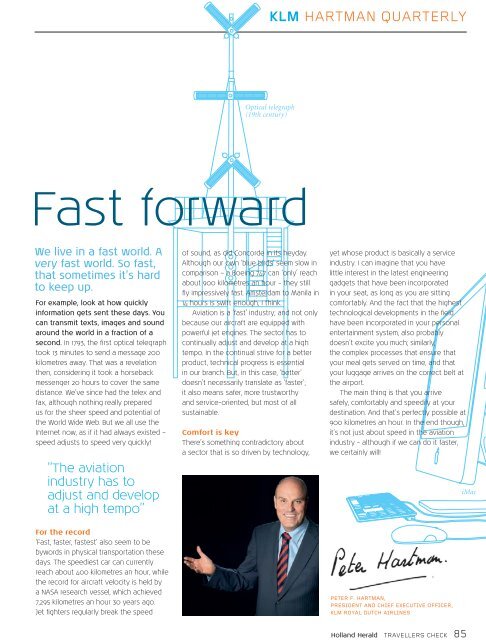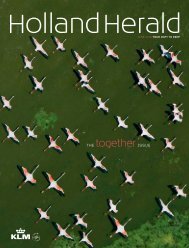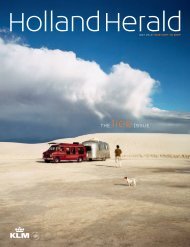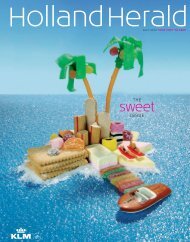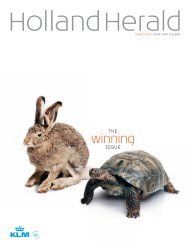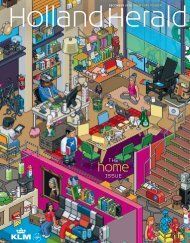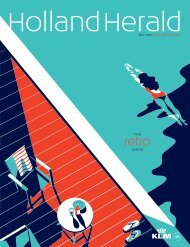march-2010
march-2010
march-2010
You also want an ePaper? Increase the reach of your titles
YUMPU automatically turns print PDFs into web optimized ePapers that Google loves.
Fast forward<br />
We live in a fast world. A<br />
very fast world. So fast,<br />
that sometimes it’s hard<br />
to keep up.<br />
For example, look at how quickly<br />
information gets sent these days. You<br />
can transmit texts, images and sound<br />
around the world in a fraction of a<br />
second. In 1793, the fi rst optical telegraph<br />
took 13 minutes to send a message 200<br />
kilometres away. That was a revelation<br />
then, considering it took a horseback<br />
messenger 20 hours to cover the same<br />
distance. We’ve since had the telex and<br />
fax, although nothing really prepared<br />
us for the sheer speed and potential of<br />
the World Wide Web. But we all use the<br />
Internet now, as if it had always existed −<br />
speed adjusts to speed very quickly!<br />
“The aviation<br />
industry has to<br />
adjust and develop<br />
at a high tempo”<br />
For the record<br />
‘Fast, faster, fastest’ also seem to be<br />
bywords in physical transportation these<br />
days. The speediest car can currently<br />
reach about 400 kilometres an hour, while<br />
the record for aircraft velocity is held by<br />
a NASA research vessel, which achieved<br />
7,295 kilometres an hour 30 years ago.<br />
Jet fi ghters regularly break the speed<br />
Optical telegraph<br />
(19th century)<br />
of sound, as did Concorde in its heyday.<br />
Although our own ‘blue birds’ seem slow in<br />
comparison − a Boeing 747 can ‘only’ reach<br />
about 900 kilometres an hour – they still<br />
fl y impressively fast. Amsterdam to Manila in<br />
14 hours is swift enough, I think.<br />
Aviation is a ‘fast’ industry; and not only<br />
because our aircraft are equipped with<br />
powerful jet engines. The sector has to<br />
continually adjust and develop at a high<br />
tempo. In the continual strive for a better<br />
product, technical progress is essential<br />
in our branch. But, in this case, ‘better’<br />
doesn’t necessarily translate as ‘faster’;<br />
it also means safer, more trustworthy<br />
and service-oriented, but most of all<br />
sustainable.<br />
Comfort is key<br />
There’s something contradictory about<br />
a sector that is so driven by technology,<br />
KLM HARTMAN QUARTERLY<br />
yet whose product is basically a service<br />
industry. I can imagine that you have<br />
little interest in the latest engineering<br />
gadgets that have been incorporated<br />
in your seat, as long as you are sitting<br />
comfortably. And the fact that the highest<br />
technological developments in the fi eld<br />
have been incorporated in your personal<br />
entertainment system, also probably<br />
doesn’t excite you much; similarly,<br />
the complex processes that ensure that<br />
your meal gets served on time, and that<br />
your luggage arrives on the correct belt at<br />
the airport.<br />
The main thing is that you arrive<br />
safely, comfortably and speedily at your<br />
destination. And that’s perfectly possible at<br />
900 kilometres an hour. In the end though,<br />
it’s not just about speed in the aviation<br />
industry – although if we can do it faster,<br />
we certainly will!<br />
PETER F. HARTMAN,<br />
PRESIDENT AND CHIEF EXECUTIVE OFFICER,<br />
KLM ROYAL DUTCH AIRLINES<br />
Holland Herald TRAVELLERS CHECK 85<br />
iMac


